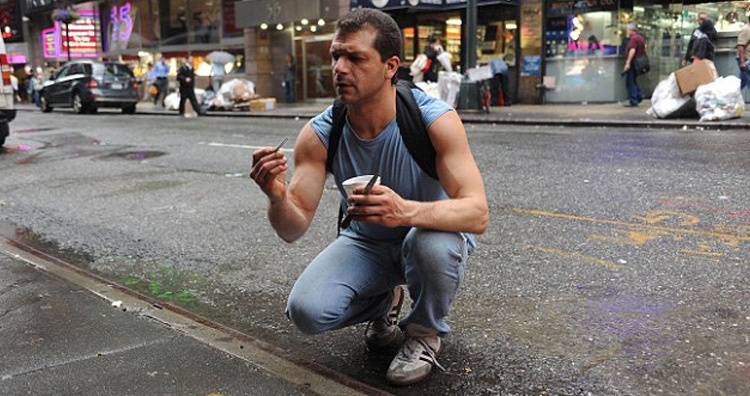Follow the Diamond Brick Road
New York City’s most famous neighborhood is Manhattan’s Times Square, located at the junction of Seventh Avenue and Broadway between 42nd and 47th Streets. There, you’ll find lots of theaters, tons of restaurants, untold acres of vertical outdoor advertising, and gobs of tourists. In some sense, it’s a world unto itself.
Significantly less well known is a neighborhood just a few blocks away. Known as the Diamond District, it runs between 47th and 50th Streets between 5th and 6th Avenue. There, you’ll find perhaps the world’s foremost marketplace for jewelry, gold, and precious gems. According to the neighborhood’s website, “more than 2,600 independent businesses are located in the Diamond District, and nearly all of them are related to diamonds or fine jewelry.”
And at first, Raffi Stepanian worked for those businesses, making a living as a freelance diamond setter. But in June of 2011, a reporter for the New York Post happened across Stepanian not inside one of these many jewlery exchanges, but on the street. Specifically, Stepanian was on his hands and knees, facing the sidewalk below, in the pouring rain. He wasn’t hurt or confused — he was working. Raffi Stepanian, pictured below, was looking for diamonds and gold.

Stepanian, as the Post reported, was “armed with tweezers and a butter knife digging through cracks in the sidewalk,” in search of tiny bits of valuable stuff that most everyone would otherwise miss. Sometimes, he’ll find a pearl (literally) that fell off a broken necklace or a small diamond that came loose from a ring; other times, he’ll come across the gold backing from an earring or some bits of gems shaved off in the shaping process by jewlery makers. A good percentage of his yields come from simply paying extraordinary attention to the detailin the sidewalk cracks, and then taking the time to dig for whatever glitters or looks out of place.
But there’s more to his method than simply being eagle-eyed. There’s also the nanogold — little flecks of gold embedded in the dirt and grime caked in the city’s streets. As Stepanian discusses in this video, this isn’t typically stuff you’d notice just walking down the street — he basically is panning for gold, taking cupfuls of city goop and washing it clean to find the literal diamonds in the rough. It’s a process that’s not dissimilar to the one the prospectors of the 1840s used. As Time reported, he “strains out the dirt and crud that takes up much of his take-away” and the “[shakes] the tub of dirt so that the gold sinks to the bottom. What’s left looks like tiny specks, but when added together can be sold for big bucks.”
Just how big? Per the above-linked Post report, Stepanian can make a few hundred dollars a week as an urban prospector; the Post stated that he made two sales in the six days prior to their write-up, totalling $819.
Bonus fact: Prospectors will often do gross things to figure out what they have on their hands. For example, crude oil — the stuff pumped out of the ground via the big oil rigs — comes in both “sweet” and “sour” varieties. Sweet crude oil has a low amount of sulfur and is typically worth a lot more than its sour counterpart, so prospectors that discover the former are a lot happier than those who discover the latter. And while it’s not terribly difficult to run tests to measure the sulfur content in a new find, the test wasn’t something early oil prospectors could carry with them. But their taste buds were. As FINRA notes, in the 1800s, “oil prospectors would actually taste oil to get a sense of its composition.”
From the Archives: Feathers, Lead, and Gold: Why a pound of feathers doesn’t weigh the same amount as a pound of gold.
